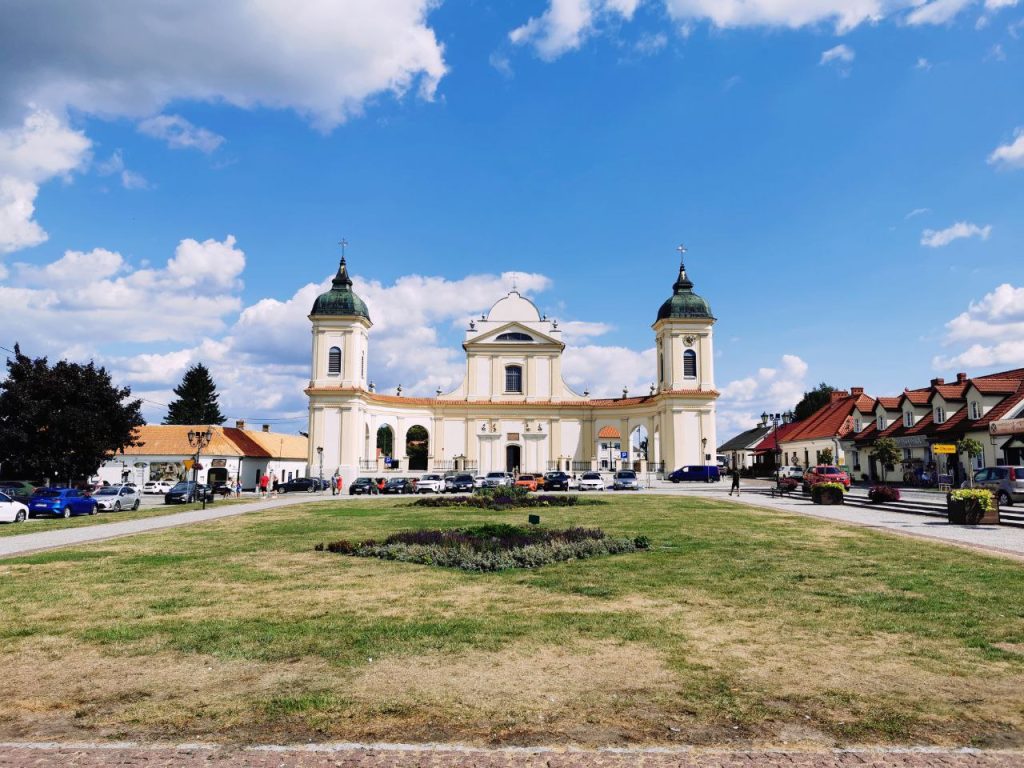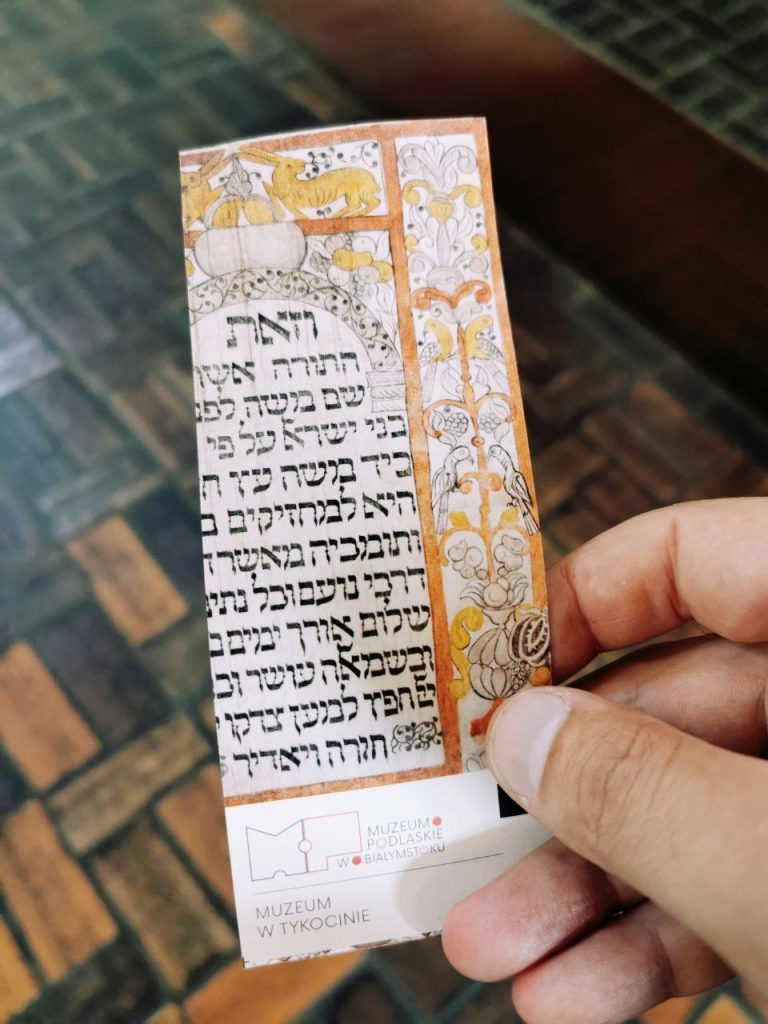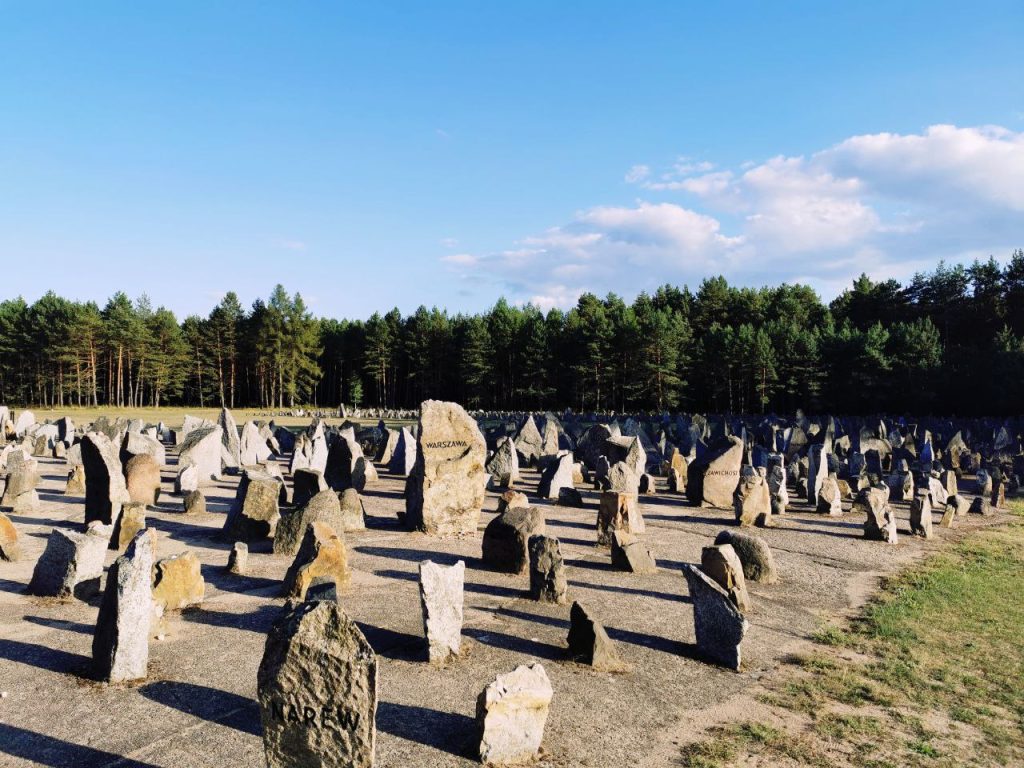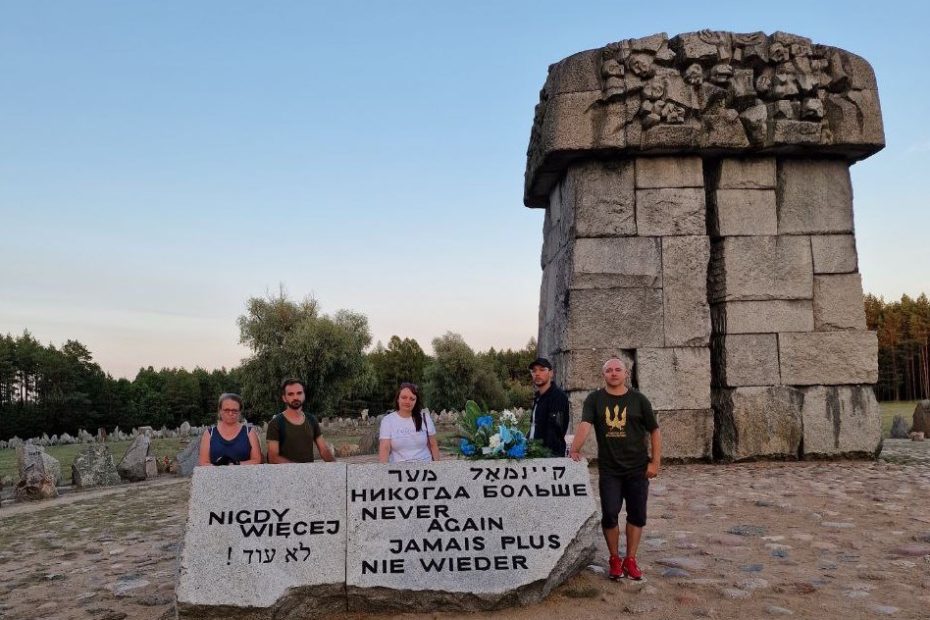On the eve of moving to Warsaw, where the next events of the Caravan will take place, the team visited two more towns in Podlasie and Mazowieckie voivodships of Poland on 23 August.

The first stop of the Caravan took place in the town of Tykotsin. Here the “caravaners” visited a synagogue built in 1736.

A synagogue is not just a house of prayer, it is first of all a house of knowledge and a house of teaching. Therefore, a rabbi is not primarily a minister, but a teacher.

The main function of the synagogue in the shtetl (town) is to unite the community, a kind of social centre.
From the age of three and a half, boys in religious families learn to read the Torah and are taught to discuss the texts in a reasoned manner.
The next stop was Treblinka….

This was the name of one of the most horrific Nazi death camps in Poland, where more than 800,000 people were murdered by the Germans in gas chambers (only Auschwitz 2, now the most famous death camp, near the Polish town of Auschwitz, had a higher number of victims).
The vast majority of the victims (99.5 per cent) were Jews from Poland, about 2,000 were Roma and Sinti.
The Treblinka camp was located in a sparsely populated area covered with dense forests, a location that was specifically chosen to hide what was happening there from prying eyes.

It was at Treblinka that the Caravan team was able to learn about the history of the horrific atrocities of World War II.
On 5 August 1942, 64-year-old Polish doctor, teacher and writer Janusz Korczak (Henrik Goldschmit) died in the same place.
Having chosen his pseudonym as a first-year medical student, Korczak wrote his main book “How to Love a Child” in the trenches amid the thunder of explosions of the First World War.

His journey, along with two hundred Jewish children from the Orphanage, was from the Warsaw ghetto to the Treblinka death camp, from which no one ever returned.
As a writer who had written the European-recognised fairy-tale novel King Matiusz the First, and as a man who had run the Orphanage for thirty years, he had the right to leave the ghetto.
But having taught the children to live, he could not abandon them when it was time for them to die.
“The Old Doctor”, as he more often called himself in the last years of his life, left with them along the “road to heaven” – as the camp guards called the corridor leading to the gas chamber.
On the road to death, Korczak held the two youngest children in his arms and told a story to the unsuspecting little ones.
The event is organized by a consortium of EENCE experts and organizations in the framework of the project “EENCE Citizenship Education Caravan”, funded by the Federal Agency for Citizenship Education (Bundeszentrale für politische Bildung / bpb) with funds allocated by the German Federal Foreign Office, program “Enhancing cooperation with civil society in the Eastern Partnership countries and Russia”. The project is implemented by the NGO Incubator of Democratic Initiatives (Ukraine).
Read also:
The next phase of the EENCE Citizenship Education Caravan started in Vilnius
EENCE Citizenship Education Caravan in Lithuania and Poland. Day 2. Vilnius
The EENCE Caravan continues its journey through Lithuania. Day 3. Kaunas and Vilkaviškis
EENCE Caravan team led an online tour of the communist heritage park in Grutas
The EENCE Citizenship Education Caravan has moved to Poland
